Collaborative Research Center 360
Constrained Quantum Matter
Less is more!
We use carefully chosen constraints to design and
manipulate quantum states in solids, seeking to create new quantum
materials and explore conceptual challenges from quantum information
theory to non-equilibrium physics.
On 20. - 21. November 2025 the next TRR 360 Young researcher Forum will take place in at the MPI for Solid State Research in Stuttgart. Find out more about the details here and start your registration!


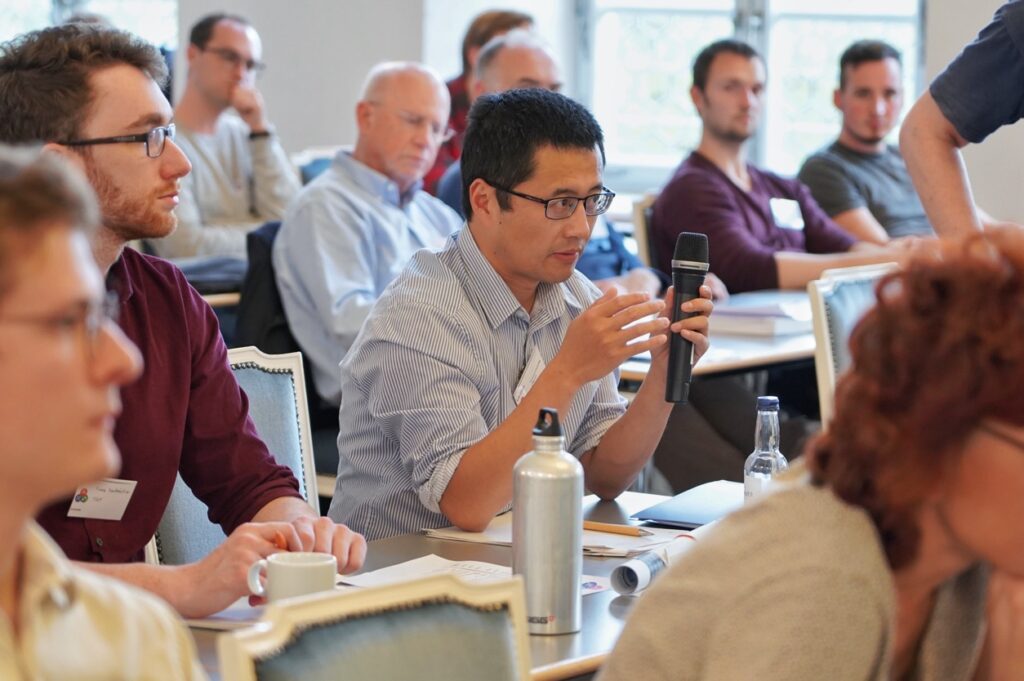
2025 James C. McGroddy Prize awarded to Hidenori Takagi
We are very proud to announce that one member of the TRR 360, Hidenori Tagaki from the MPI for solid-state research in Stuttgart, will be awarded with the 2025 James C. McGroody Prize for New Materials. He is honoured “for seminal theoretical and experimental research, materials design and discoveries that pioneered the exploration of novel forms of topological quantum matter in spin-orbit assisted Mott insulators realized in transition metal oxides”. More information can be found here. The prize will be presented in March 2025.
Next events
Recent Articles
Chmeruk, A.; Jones, D.; Balducci, R.; Ebad-Allah, J.; Beiuşeanu, F.; Schilberth, F.; Kassem, M. A.; Schade, U.; Veber, A.; Puskar, L.; Tabata, Y.; Waki, T.; Nakamura, H.; Kuntscher, C. A.; Östlin, A.; Chioncel, L. Suppression of magnetism in Co3Sn2S2 under external pressure Unpublished (2025), arXiv:2511.08141. @unpublished{chmeruk_suppression_2025,The ability to control the magnetic state provides a powerful means to tune the underlying band topology, enabling transitions between distinct electronic phases and the emergence of novel quantum phenomena. In this work, we address the evolution of ferromagnetic state upon applying external pressures up to 10.8~GPa using a combined experimental and theoretical study. The standard emph{ab initio} Density Functional Theory computation including ionic relaxations grossly overestimates the unit cell magnetization as a function of pressure. In our theoretical analysis we identify two possible mechanisms to remedy this shortcoming. Matching the experimental observations is achieved by a symmetry-preserving adjustment of the sulfur atoms position within the unit cell. Alternatively, we explore various combinations of the exchange and correlation parts of the effective potential which reproduce the experimental magnetization, the structural parameters and the measured optical conductivity spectra. Thus, the pressure-dependent behavior of magnetization demands a careful theoretical treatment and analysis of theoretical and experimental data. |
Wu, Y.; Dai, Z.; Anand, S.; Lin, S. -H.; Yang, Q.; Wang, L.; Pollmann, F.; Zaletel, M. P. Alternating and Gaussian Fermionic Isometric Tensor Network States Journal Article PRX Quantum 6, 040324 (2025). @article{wu_alternating_2025,Isometric tensor networks in two dimensions enable efficient and accurate study of quantum many-body states, yet the effect of the isometric restriction on the represented quantum states is not fully understood. We address this question in two main contributions. First, we introduce an improved variant of isometric tensor network states (isoTNS) in two dimensions, where the isometric arrows on the columns of the network alternate between pointing upward and downward; hence the name alternating isometric tensor network states. Second, we introduce a numerical tool—the isometric Gaussian fermionic TNS (isoGfTNS)—that incorporates isometric constraints into the framework of Gaussian fermionic tensor network states. We demonstrate in numerous ways that alternating isoTNSs represent many-body ground states of two-dimensional quantum systems significantly better than the original isoTNSs. First, we show that the entanglement in an isoTNS is mediated along the isometric arrows and that alternating isoTNSs mediate entanglement more efficiently than conventional isoTNSs. Second, alternating isoTNSs correspond to a deeper, and thus more representative, sequential-circuit construction of depth 𝒪(𝐿𝑥 ⋅𝐿𝑦) compared to the original isoTNSs of depth 𝒪(𝐿𝑥 +𝐿𝑦). Third, using the Gaussian framework and gradient-based energy minimization, we provide numerical evidence of better bond-dimension scaling and variational energy of alternating isoGfTNSs for ground states of various free-fermionic models, including the Fermi surface, the band insulator, and the 𝑝𝑥 +𝑖𝑝𝑦 mean-field superconductor. Finally, benchmarking on the transverse-field Ising model, we demonstrate that an alternating isoTNS provides substantially improved performance and stability relative to the original isoTNS for the ground-state search algorithm in interacting systems. |
Yamada, R.; Birch, M. T.; Baral, P. R.; Okumura, S.; Nakano, R.; Gao, S.; Ezawa, M.; Nomoto, T.; Masell, J.; Ishihara, Y.; Kolincio, K. K.; Belopolski, I.; Sagayama, H.; Nakao, H.; Ohishi, K.; Ohhara, T.; Kiyanagi, R.; Nakajima, T.; Tokura, Y.; Arima, T.; Motome, Y.; Hirschmann, M. M.; Hirschberger, M. A metallic p-wave magnet with commensurate spin helix Journal Article Nature 646, 837 (2025). @article{yamada_metallic_2025,Antiferromagnetic states with a spin-split electronic structure give rise to spintronic, magnonic and electronic phenomena despite (near-)zero net magnetization [1–7]. The simplest odd-parity spin splitting—p wave—was originally proposed to emerge from a collective instability in interacting electron systems [8–12]. Recent theory has identified a distinct route to realize p-wave spin-split electronic bands without strong correlations [13,14], termed p-wave magnetism. Here we demonstrate an experimental realization of a metallic p-wave magnet. The odd-parity spin splitting of delocalized conduction electrons arises from their coupling to an antiferromagnetic texture of localized magnetic moments: a coplanar spin helix whose magnetic period is an even multiple of the chemical unit cell, as revealed by X-ray scattering experiments. This texture breaks space-inversion symmetry but approximately preserves time-reversal symmetry up to a half-unit-cell translation—thereby fulfilling the symmetry conditions for p-wave magnetism. Consistent with theoretical predictions, our p-wave magnet shows a characteristic anisotropy in the electronic conductivity [13–15]. Relativistic spin–orbit coupling and a tiny spontaneous net magnetization further break time-reversal symmetry, resulting in a giant anomalous Hall effect (Hall conductivity >600 S cm−1, Hall angle >3%), for an antiferromagnet. Our model calculations show that the spin-nodal planes found in the electronic structure of p-wave magnets are readily gapped by a small perturbation to induce the anomalous Hall effect. We establish metallic p-wave magnets as an ideal platform to explore the functionality of spin-split electronic states in magnets, superconductors, and in spintronic devices. |
Nandi, S.; Jawale, M.; Bachhar, S.; Kumar, Rahul; Schuller, M.; Bag, R.; Wilkinson, J.; Sichelschmidt, J.; Sundaresan, A.; Haravifard, S.; Büttgen, N.; Mahajan, A. V. Observation of a gapped phase in the one-dimensional S = 1/2 Heisenberg antiferromagnetic chain Cu(Ampy)ClBr Journal Article Phys. Rev. B 112, 134437 (2025). @article{nandi_observationof_2025,Spin-1/2 Heisenberg antiferromagnetic frustrated spin-chain systems display exotic ground states with unconventional excitations and distinct quantum phase transitions as the ratio of next-nearest-neighbor to nearest-neighbor coupling is tuned. We present a comprehensive investigation of the structural, magnetic, and thermodynamics properties of the spin-1/2 compound, Cu(Ampy)ClBr(Ampy=C6H8N2=2 -(aminomethyl)pyridine) via x-ray diffraction, magnetization, specific heat, 1H nuclear magnetic resonance (NMR), electron spin resonance, and muon spin relaxation (𝜇SR) techniques. The crystal structure features an anisotropic triangular chain lattice of magnetic Cu2+ ions. Our bulk and local probe experiments detect neither long-range magnetic ordering nor spin freezing down to 0.06 K despite the presence of moderate antiferromagnetic interaction between Cu2+ spins as reflected by a Curie-Weiss temperature of about −9 K from the bulk susceptibility data. A broad maximum is observed at about 9 K in magnetic susceptibility and specific-heat data, indicating the onset of short-range spin correlations. At low temperatures, the zero-field magnetic specific heat and the 1H NMR spin-lattice relaxation rate follow an exponential temperature dependence, indicating the presence of gapped magnetic excitations. Furthermore, persistent spin dynamics down to 0.088 K observed by zero-field 𝜇SR evidences lack of any static magnetism. |
Kovács, A.; Weber, J. T.; Charilaou, M.; Kong, D.; Prodan, L.; Tsurkan, V.; Schröder, A.; Kiselev, N. S.; Kézsmárki, I.; Dunin-Borkowski, R. E.; Tavabi, A. H.; Schäfer, S. All-optical stochastic switching of magnetisation textures in Fe3Sn2 Journal Article Commun. Mater. 6, 223 (2025). @article{kovacs_all-optical_2025,The all-optical control of magnetisation at room temperature broadens the scope of applications of spin degrees-of-freedom in data storage, spintronics, and quantum computing. Topological magnetic spin structures, such as skyrmions, are of particular interest due to their particle-like properties, small size and inherent stability. Controlling skyrmion states without strong magnetic fields or large current densities would create new possibilities for their application. In this work, we utilize femtosecond optical pulses to alter the helicity of the spin configuration in dipolar skyrmions formed in the kagome magnet Fe3Sn2 in the absence of an external magnetic field and at room temperature. In situ Lorentz transmission electron microscopy is used to visualise the light-induced stochastic switching process of chiral Néel caps, while the internal Bloch component of the dipolar skyrmions remains unchanged. In addition to this switching process, we observe the interconversion between type I skyrmionic and type II bubble configurations depending on the external magnetic field and illumination conditions. To corroborate the spin states and the light-induced magnetisation dynamics, micromagnetic modelling and simulations of the resulting electron phase shift maps are conducted to elucidate the spin rearrangement induced by individual femtosecond optical pulses. |
Impressions from past events
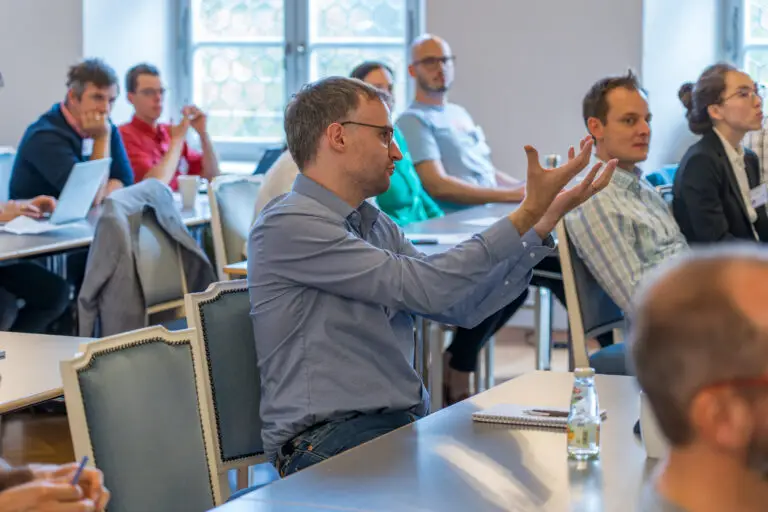

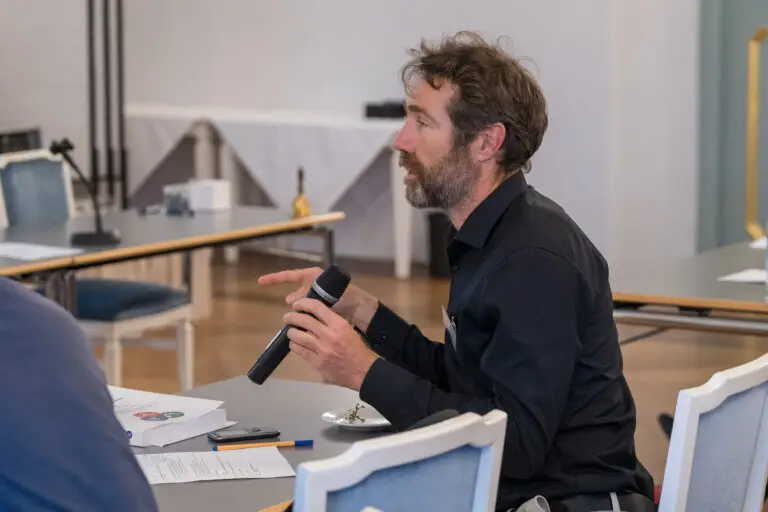
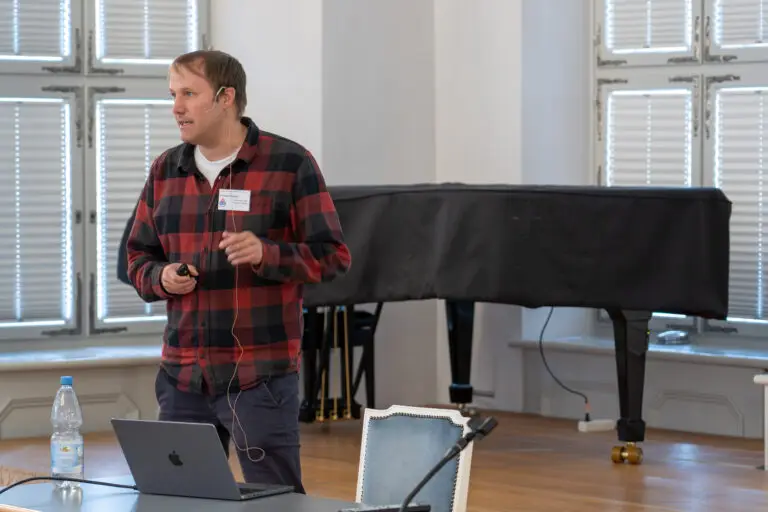
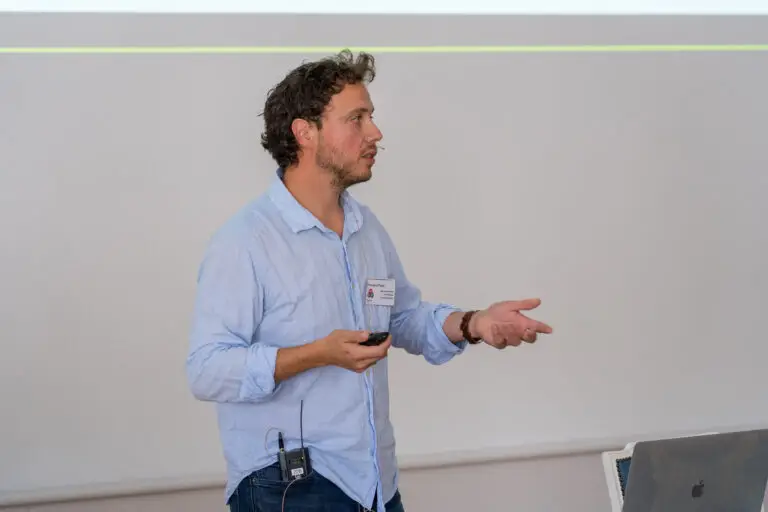


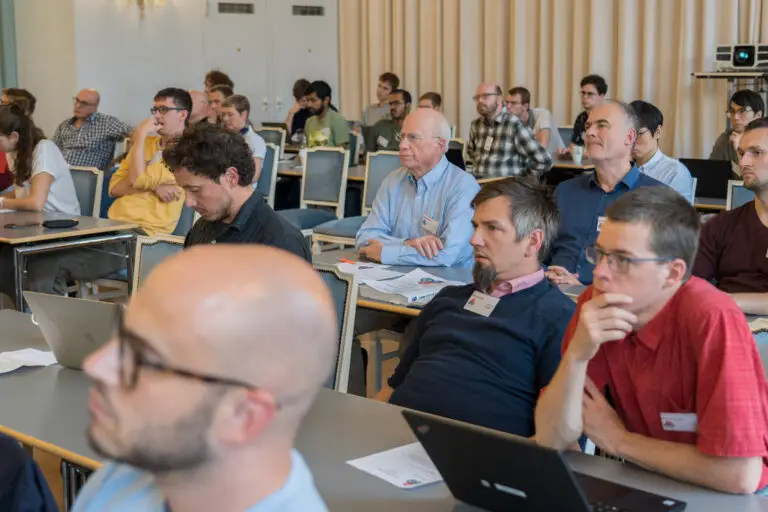
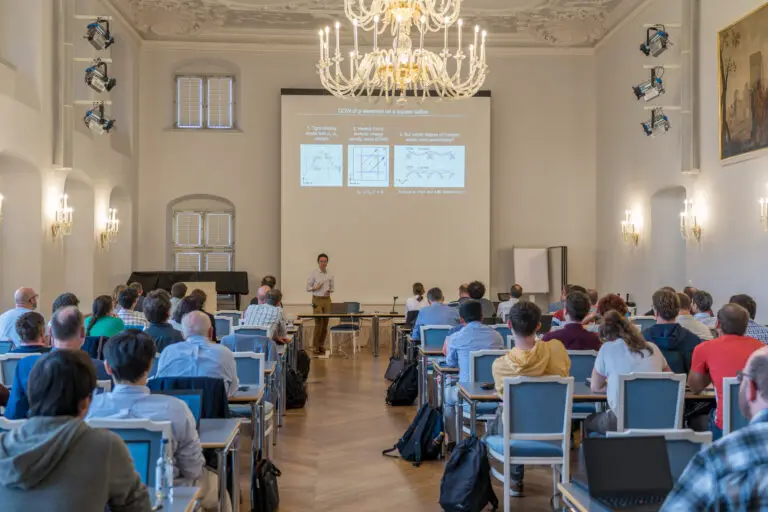
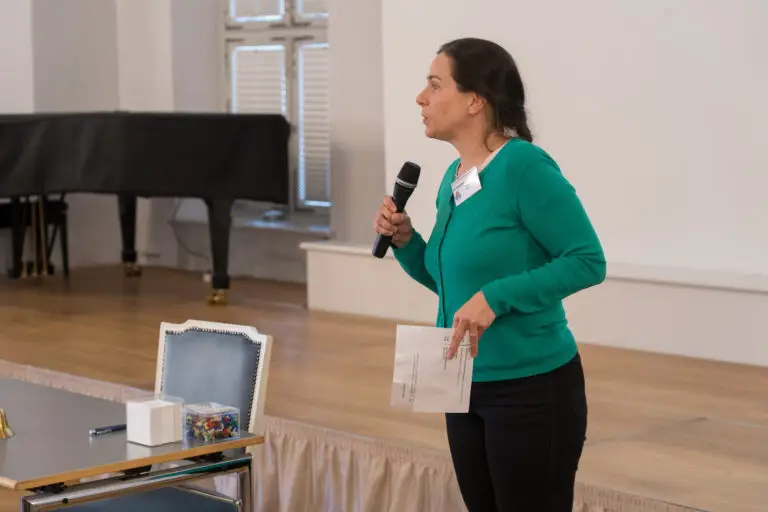
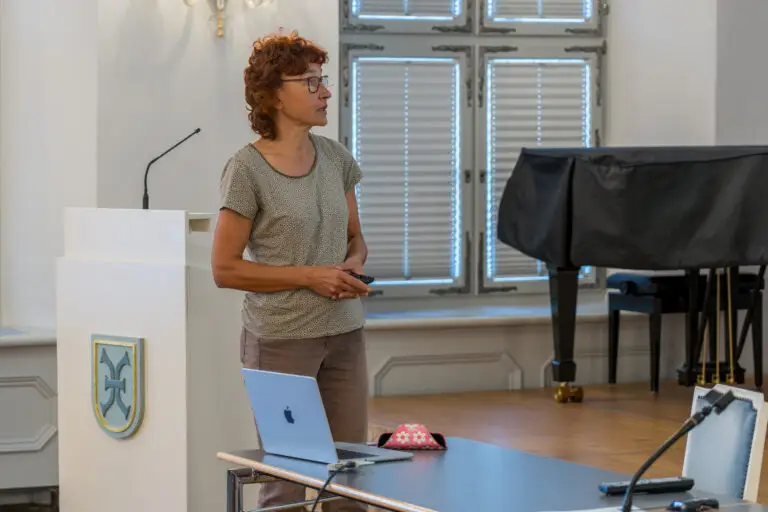
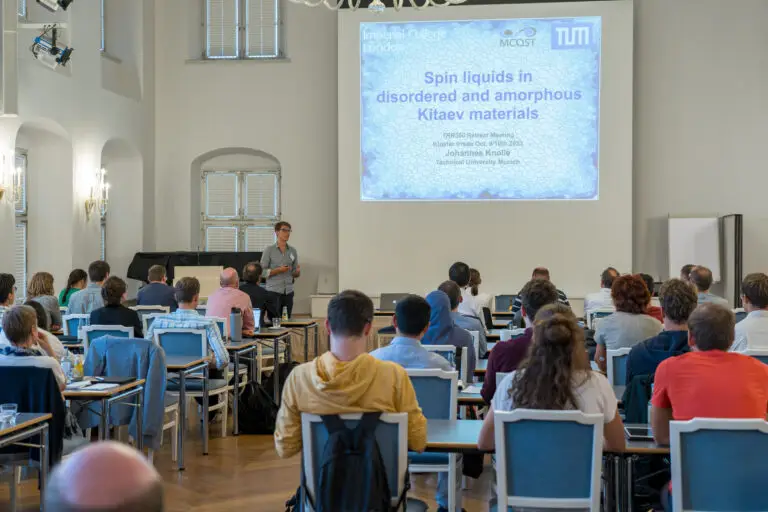
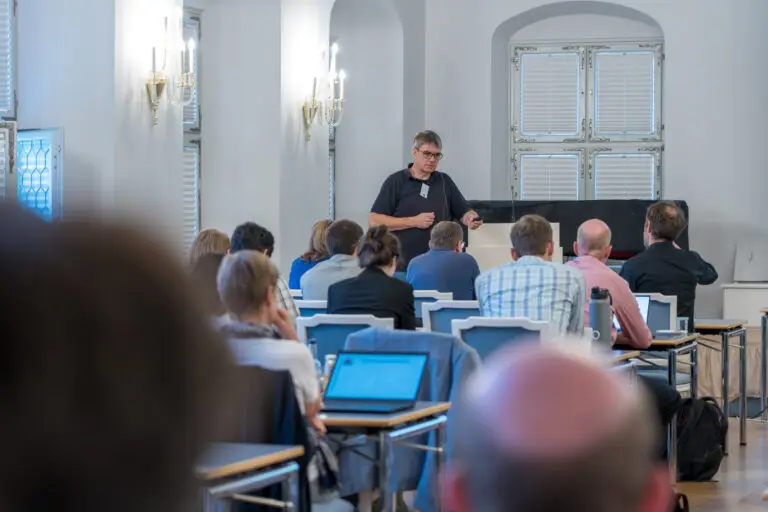
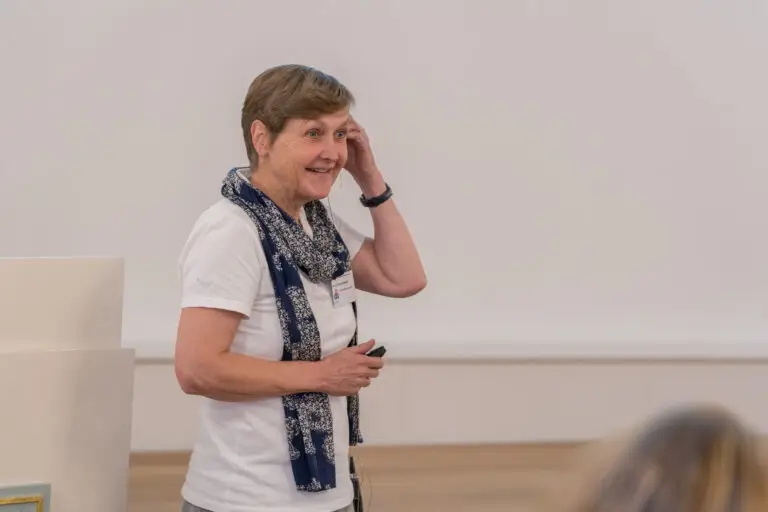
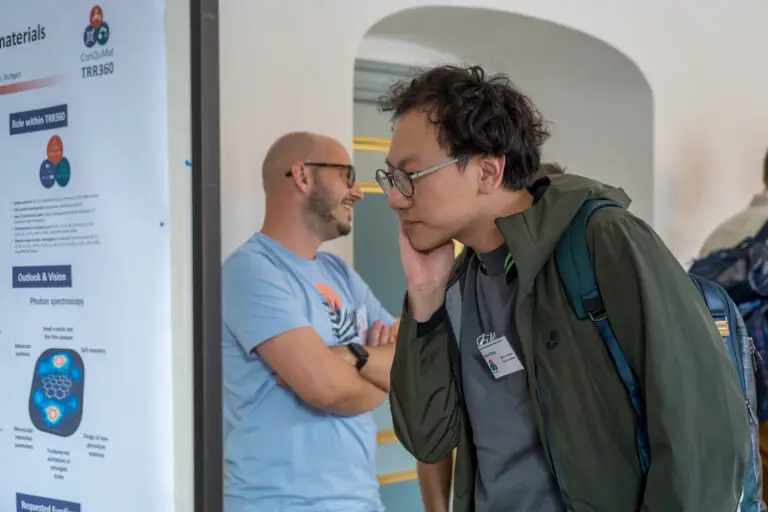

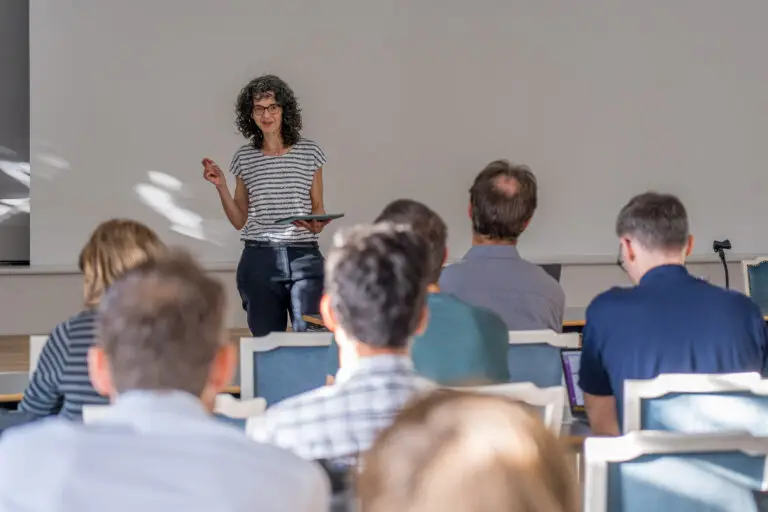
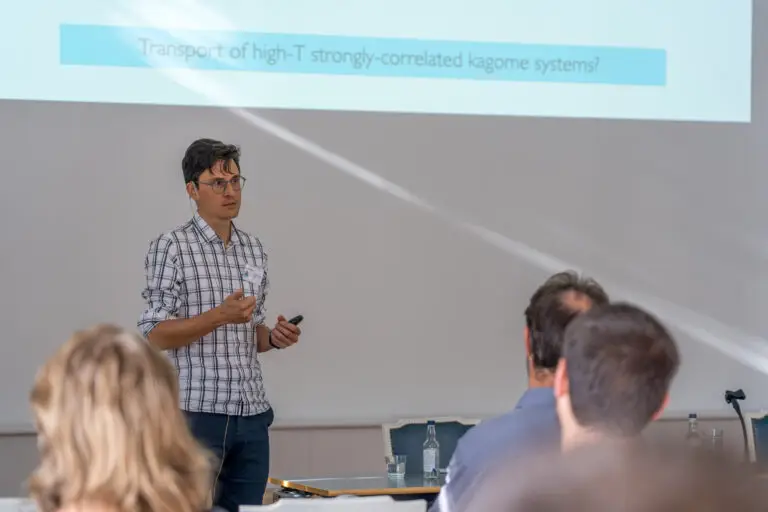

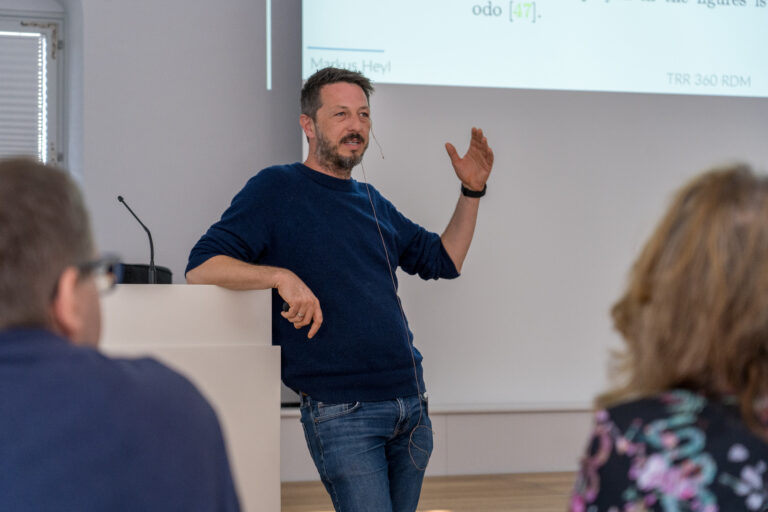

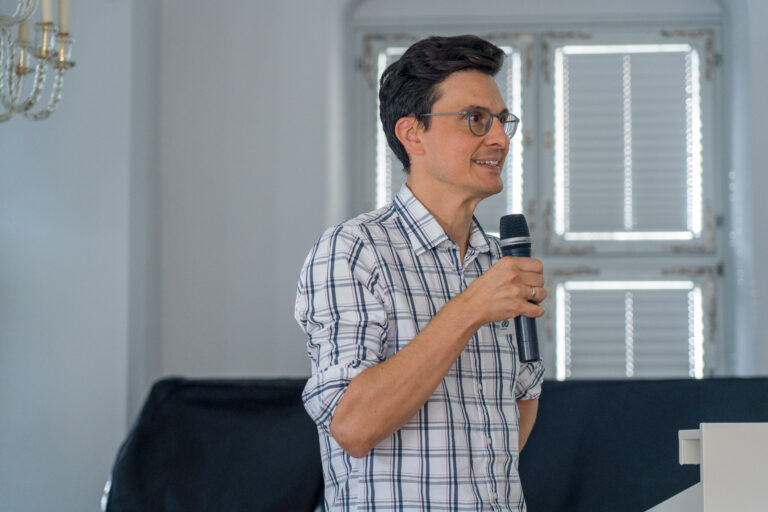
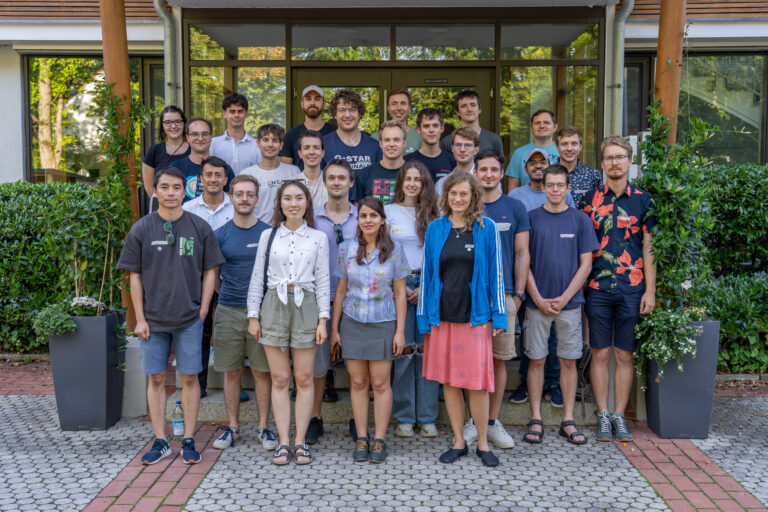
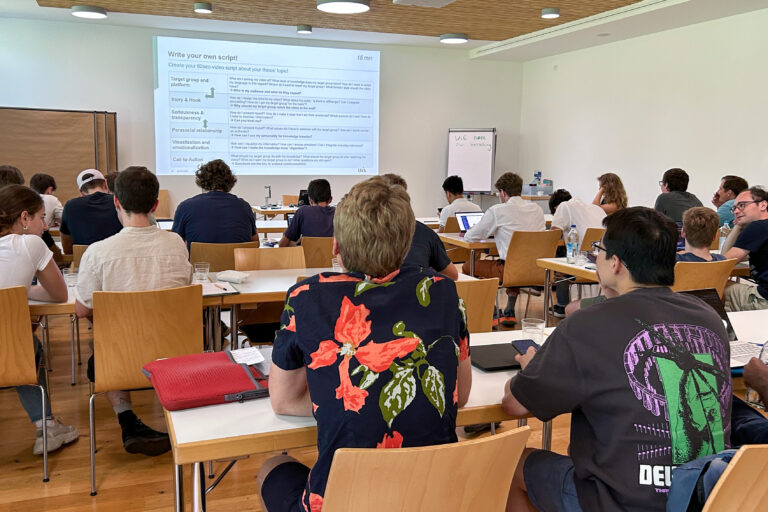

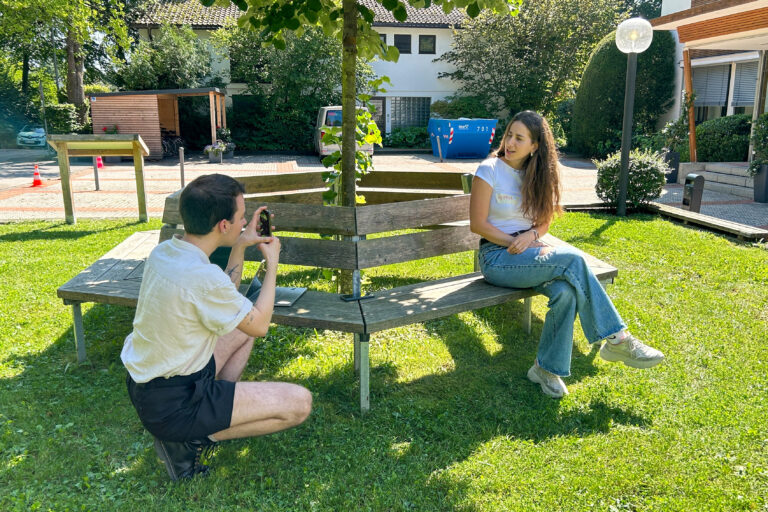
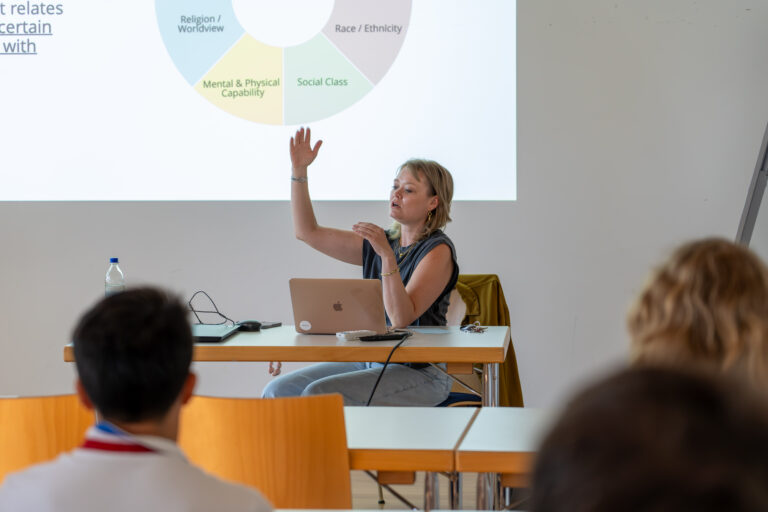
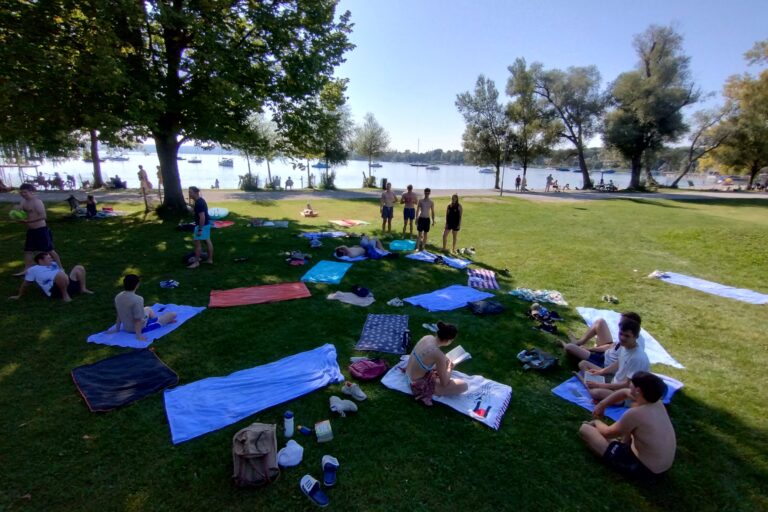
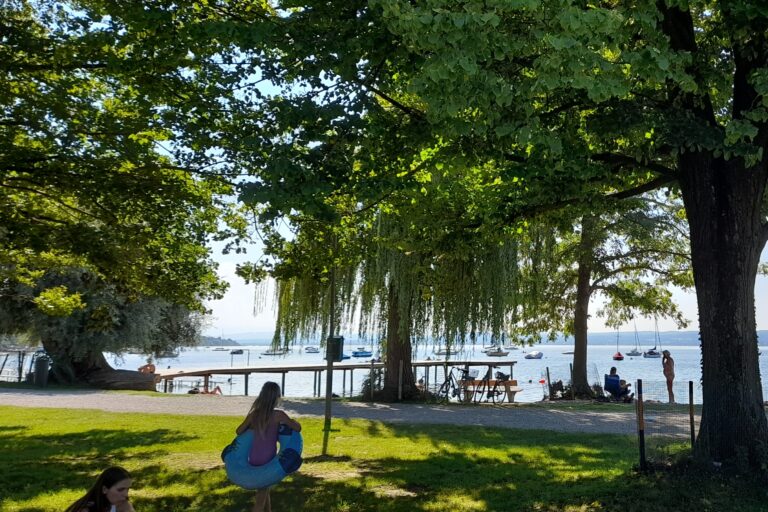

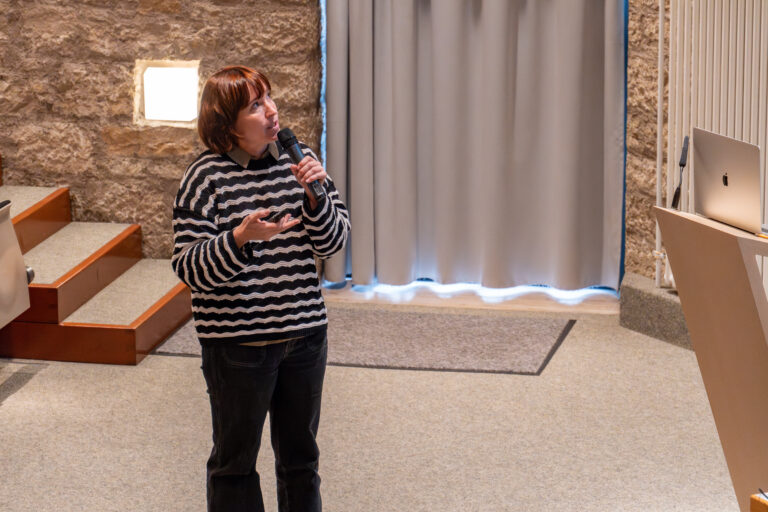



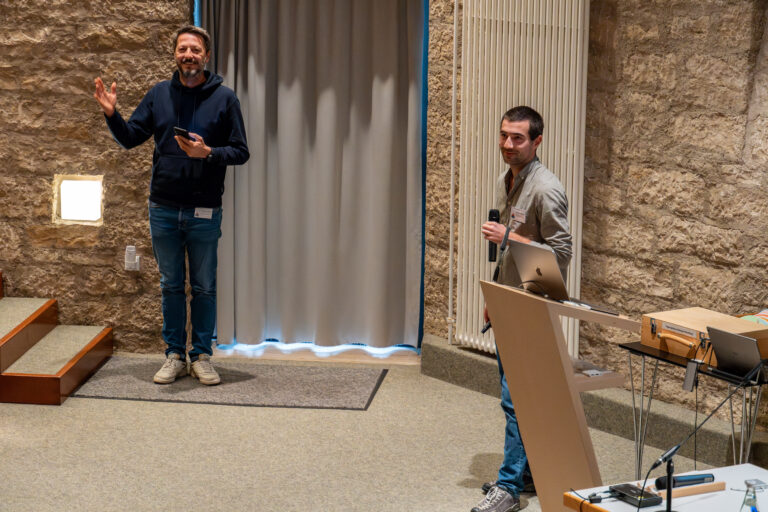

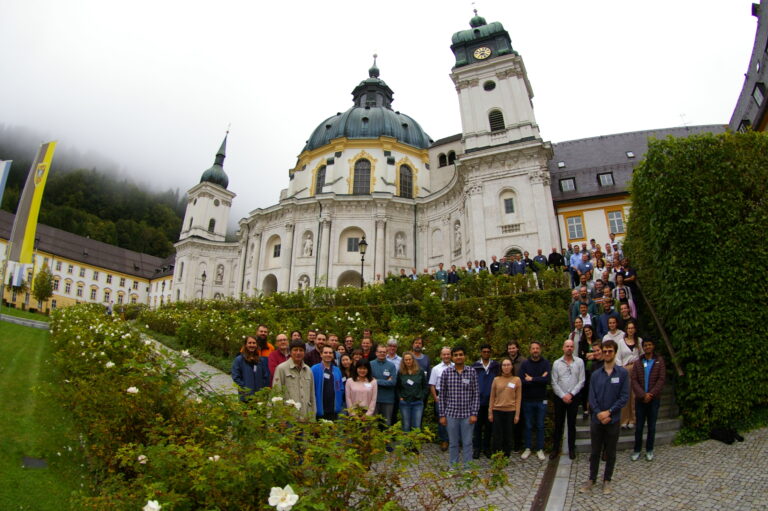

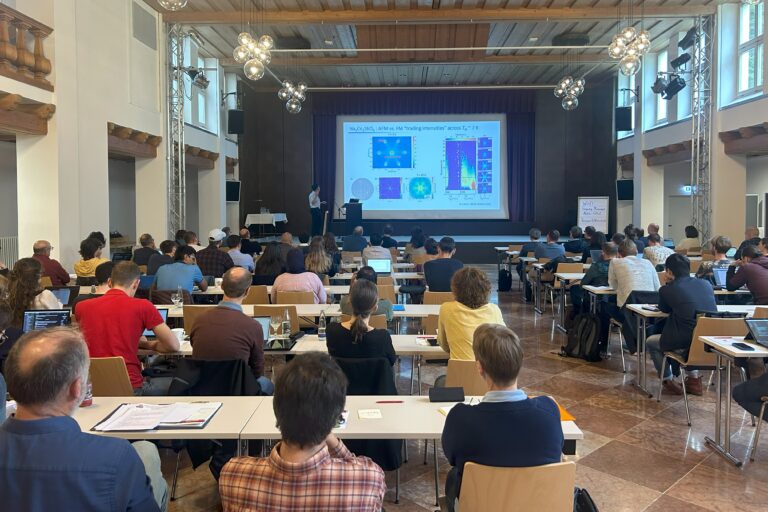
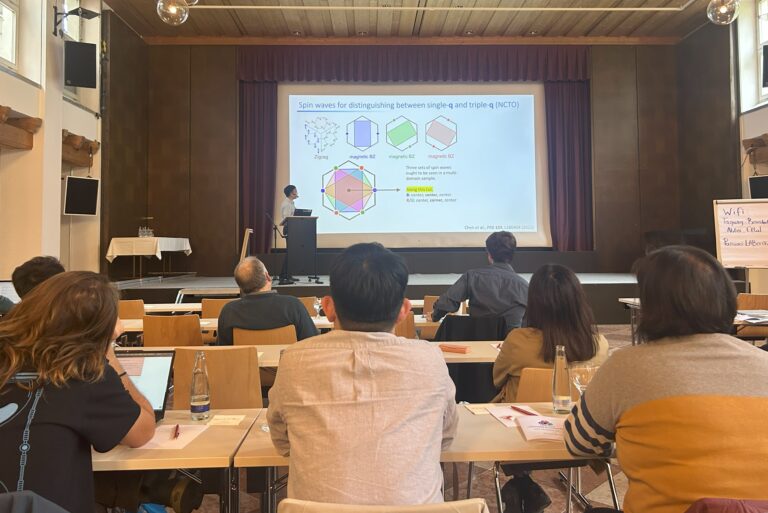
The research programme
We seek to design and utilize new quantum states by taking advantage of the recently developed capability to tailor electron systems in complex materials through a variety of complementary constraints, focusing on spin-momentum locking, gauge structures of interacting spin systems, and kinetic constraints.
News
Here you can find all the important news around the project ConQuMat: recent publication, internal events for project members and opening for various positions.
Outreach - Öffentlichkeitsarbeit
Dive with us into the fascinating world of quantum matter! (science communication offers in German)
Es gibt viele Angebote, um die Forschung aus dem Projekt ConQuMat der Öffentlichkeit zugänglich zu machen. Egal ob durch einen Blog, Spiele oder Erlebnisveranstaltungen – tauchen Sie mit uns in die faszinierende Welt der Quantenmaterie ein!
